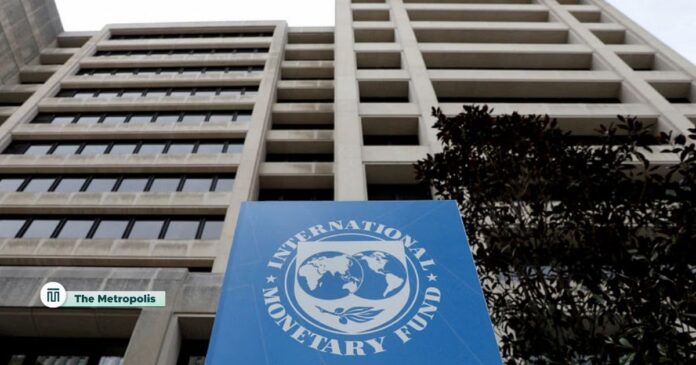Following the World Bank, the International Monetary Fund has now lowered Bangladesh’s growth projection for this year due to the significant impact of floods, industrial unrest, and political unpredictability on economic activity.
The IMF cut Bangladesh’s growth forecast by 2.1 percentage points to 4.5 percent in its main World Economic Outlook, the lowest since the global coronavirus pandemic struck in fiscal 2019–20. In fiscal year 2019-20, GDP grew by 3.4%.
The IMF predicted earlier in June that Bangladesh’s GDP would grow by 6.6% this fiscal year.
Due to “significant uncertainties following recent political turmoil” and “data unavailability,” the World Bank cut its growth forecast for the Bangladeshi economy by 1.7 percentage points to 4 percent for fiscal 2024–2025 last week.
GDP growth might be as low as 3.2 percent and, at best, 5.2 percent if things get better.
This followed the Asian Development Bank’s earlier reduction of its growth estimate for Bangladesh from 6.6 percent to 5.1 percent, citing supply chain disruptions brought on by political unrest in July and August.
The causes of the lower growth and higher inflation projections were not addressed in the IMF Outlook.
The World Bank lowers its FY25 growth estimate for Bangladesh to 4%.
But according to a statement released by an IMF team that visited Bangladesh in September, economic activity has significantly slowed, and inflation is still in the double digits because of recent turbulence and significant floods.
Zahid Hussain, a former lead economist at the World Bank’s Dhaka office, stated, “Nothing happened in the last three months that would continue the economic growth—it was supposed to be negative growth.”
Hussain is a member of the committee that the interim government established to draft an economic white paper.
He stated that “we have to repeal the losses first by bringing GDP growth to zero and then push for positive growth,” adding that a 4-4.5 percent GDP growth rate could be considered a good performance for the nation.
According to Hussain, the recent flood, industrial disruption, and political unpredictability have all eaten up GDP, and the high rate of inflation is making matters worse.
For this fiscal year, the IMF has forecast an average inflation rate of 10.7 percent.
Industries, which have been stagnating in recent months, are the primary engine of economic growth, according to Hussain.
In July, no industry was operating during the protests.
Weak export orders are a result of the labour unrest and the continuing instability of the law enforcement situation.
He added that the recent flood had hindered agricultural activities.
“The days that lie ahead are also uncertain. We are taking each week as it comes. There will be a lot of uncertainty in the future because we don’t know what will happen next week.”
Furthermore, the contractionary stance the government has adopted to control inflation has a negative impact on economic growth.
Because food inflation is the primary problem in Bangladesh and cannot be reduced by simply stabilising the foreign exchange rate, it is difficult to reduce inflation with contractionary policy alone.
“We must keep an eye on the supply side in order to lower food prices. Since they are engaging in market policing, the interim government’s approach is identical to that of the previous administration.
“A market cannot be stabilised through market policing,” he said. “Policing is required in only controlling the extortion.”
Hussain stated that the production of boro and aman crops and vegetables must be abundant in order to reach the desired growth rate, and that a recovery in industrial activity is also essential.



